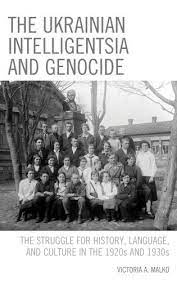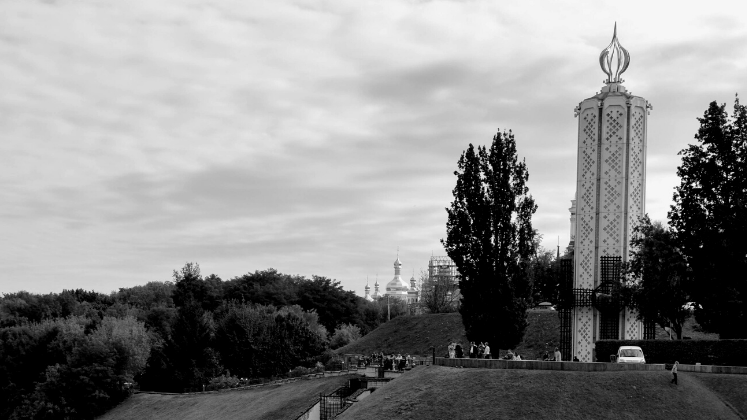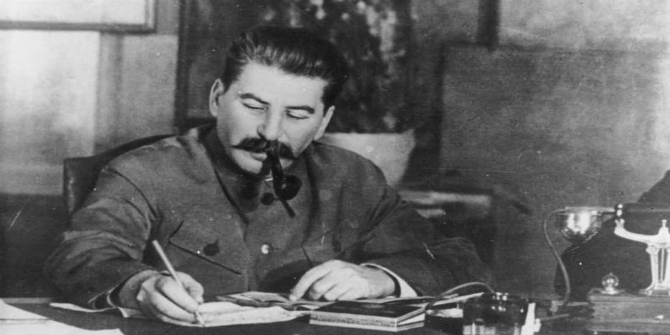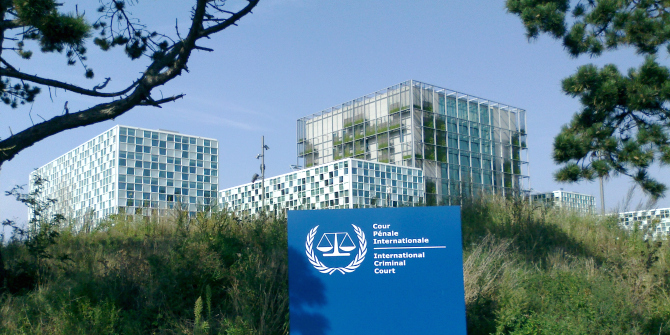In The Ukrainian Intelligentsia and Genocide: The Struggle for History, Language, and Culture in the 1920s and 1930s, Victoria A. Malko explores how the Ukrainian intelligentsia were one of the first groups targeted during the Holodomor. This is an illuminating study of a decade that traumatised Ukraine as a nation and has shaped its politics to this very day, writes Sofiya Sapryka.
The Ukrainian Intelligentsia and Genocide: The Struggle for History, Language, and Culture in the 1920s and 1930s. Victoria A. Malko. Lexington Books. 2021.
 Victoria A. Malko’s book, The Ukrainian Intelligentsia and Genocide: The Struggle for History, Language, and Culture in the 1920s and 1930s, draws attention to a mostly forgotten, yet highly relevant decade of Ukrainian history. It is a decade that traumatised Ukraine as a nation and has shaped its politics to this very day.
Victoria A. Malko’s book, The Ukrainian Intelligentsia and Genocide: The Struggle for History, Language, and Culture in the 1920s and 1930s, draws attention to a mostly forgotten, yet highly relevant decade of Ukrainian history. It is a decade that traumatised Ukraine as a nation and has shaped its politics to this very day.
Malko is an expert in Modern Europe and World History, currently working at California State University, Fresno. In her book, she successfully deconstructs numerous assumptions about Ukraine and its relations with Russia. Considering the current crisis and the upsurge of reporting on both countries, this is a vital and timely contribution. It provides the reader with reliable and well-researched information on Ukrainian history that serves as a basis for understanding its current affairs. The author’s main contention is that the discourse on Ukraine – whether in academic circles or elsewhere – is highly dominated by Russia.
In her book, Malko explains her observations analytically and her arguments are well-written and organised. She provides the reader with first-hand testimonies, declassified Soviet documents and released materials from and about Ukrainian intellectuals. By the end of the book, the reader will be able to understand today’s Russian disinformation campaigns by going back to their origins.
In the book, the author uses the ‘Holodomor’ – ‘holod’ (hunger) and ‘mor’ (death), meaning ‘death caused by hunger’ (xvi) – as the prime example of how a people’s history can be told by the (more) powerful in ways that shape international perceptions and blind it to the suffering of the oppressed. Raphael Lemkin, a lawyer known for coining the term ‘genocide’, defined the Holodomor as a ‘classic example of Soviet Genocide and the longest and broadest experiment in Russification by extermination of Ukrainian people by hunger’ during the 1920s and 1930s (xvii). A number of nations around the world have since recognised the Holodomor as a genocide.

Image Credit: Black-and-white version of ‘Holodomor victims Memorial’ by Francisco Anzola licensed under CC BY 2.0
This study examines the existential threats and ideological choices the Ukrainian intelligentsia faced as the first group targeted during the genocide. Due to the big influence of the patriotic intelligentsia and a strong tradition of national liberation struggle led by it, the intelligentsia became the epicentre of the Holodomor, a man-made famine. Bolsheviks needed teachers to educate future fighters about communism who were supposed to become the future builders of a ‘new Soviet civilisation’. Essentially, Ukraine’s urge to become independent became a ‘bone in the throat’ of the Soviet regime. Therefore, the Soviets had to counter such efforts and aspirations.
The provided materials show, among other aspects, how the Bolsheviks promised those living abroad a chance at contributing towards strengthening the Ukrainian language and culture (‘Ukrainisation’). This turned out to be a malicious long-term strategy that, according to Malko, was always supposed to be reversed (through ‘Deukrainisation’ or ‘Russification’). Once most of those living abroad were lured back to Ukraine in 1925 at the invitation of the Soviet government, the entire intelligentsia was left with two options: either to support the Bolshevik line and actively contribute to its propaganda or be purged and exiled to ‘labor camps’, where the survival rate was 13 per cent. While some opted for the latter, others, fearing for their lives, capitulated by adopting the ‘red line’. From this point on, they would not only become conformists, but they would also serve as Bolshevik propagandists by influencing other people’s ideas and their everyday behaviour based on Soviet wishes.
The number of victims of the Holodomor has been a debatable topic, especially because of the disinformation campaigns organised by the Russian government. According to Malko, Ukraine lost 7 to 10 million people, who were starved to death, executed or died from different diseases caused by hunger. In the end, not only the intelligentsia class alone, but all Ukrainians suffered under the genocide against Ukrainians in the twentieth century.
The book’s central concern is that, to this day, Russia does not acknowledge that there was ever a ‘genocide’ in Ukraine. Rather, it is argued that the events were not Ukraine-specific and that the entire Soviet Union suffered this tragedy. Malko argues that such claims are not only false, but part of a broader disinformation campaign led by Russia with the goal of portraying Ukraine as a mere ‘appendage’ to it. Blurring the lines between Ukraine and Russia not only obliterates the former’s unique culture, identity and history, but also its sovereignty.
As we see in the ongoing crisis, a considerable part of the Russian narrative is to relativise the Ukrainian fight for independence and question its very right to seek it in the first place. Malko’s book provides the reader with the Ukrainian perspective on a historical example of such a disinformation campaign in a manner that seeks to fill a gap in the literature about Russian-Ukrainian relations.
By giving voice to the voiceless, Malko’s contribution is critical and highly counter-hegemonic. For instance, she shows how the dominant term, ‘all-Union famine’, obscures ethnical aspects, which, in turn, weakens any claims of ‘genocide’ and strips such accusations of their legitimacy. As Malko argues, that one third of Ukraine’s population died during the Holodomor consequently becomes less visible. For Ukrainians, it was murder by famine, while Russians see it as being part of a broader tragedy (an all-Union famine). What is the difference? For Malko, everything. She stresses that the latter argument is part of a broader strategy of brushing over crimes, aggressions and discrimination against the people of Ukraine.
The book succeeds in both shedding light on an unjustly forgotten and/or misconstrued genocide in European history as well as using it as a starting point for making sense of today’s Russian-Ukrainian relations. Both informative and appealing, the book manages to present controversial debates, while explicitly stating and highlighting the author’s own interpretations. By doing so, Malko provides readers with important facts while leaving them enough room to further explore areas that might be considered debatable. Without assuming prior knowledge, Malko takes the reader through this history, grounded in research and strengthened by an impressive amount of primary resources. Malko illustrates how and why it is important to take a closer look at this tragic period of history, where the preconditions and aftermath are of equal importance (in terms of the book’s analysis) as the genocide itself.
Anyone who is interested in the core of any conflict must go back and learn more about its origins. For those wanting to make sense of the ongoing conflict between Russia and Ukraine and the former’s aggression towards the latter, this means going back nearly 100 years. Whether an expert or a novice, this is a worthwhile journey, and Victoria Malko makes the book as illuminating as any reader might hope for.
Note: This review gives the views of the author, and not the position of the LSE Review of Books blog, or of the London School of Economics and Political Science.







